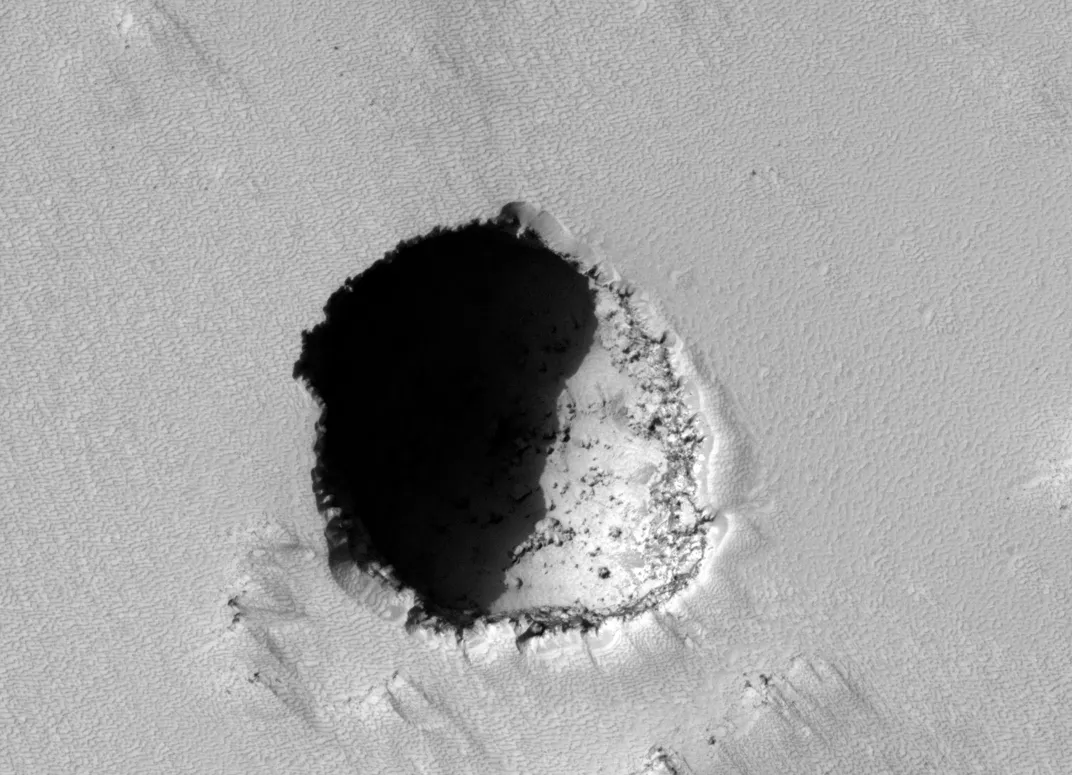A Toxic Cocktail on the Surface of Mars
New experiments on Earth may affect how we search for life on the Red Planet.
/https://tf-cmsv2-smithsonianmag-media.s3.amazonaws.com/filer/e9/a8/e9a83338-26f1-4ac9-ad3a-6c261761360b/pathfinder_sojourner.jpg)
In a new paper in the journal Scientific Reports, Jennifer Wadsworth and Charles Cockell from the U.K. Centre for Astrobiology in Edinburgh, Scotland, report on a series of experiments to test how environmental stresses on Mars would affect bacterial populations. It was already known that the Martian surface is a tough place for microbes to survive, but the new experiments show just how toxic the mix of ultraviolet irradiation, perchlorates in the soil, and iron oxides really is.
Wadsworth and Cockell used for their tests Bacillus subtilis, a common soil bacterium on Earth that normally is quite resilient to environmental stresses. But the Mars-like combination of perchlorates and UV radiation simply was too much. In some cases, stressing the bacteria resulted in complete sterilization of a sample in only 60 seconds!
Of course, we might expect that indigenous life on Mars would be better suited to deal with these environmental stresses than terrestrial life is, because any existing Martian organisms would have had a long time to adapt from a warmer and wetter Mars to current conditions, and may have evolved adaptation strategies. Nevertheless, seeing the devastating effects of the toxic cocktail on a familiar type of bacteria shows how difficult these stresses would be to overcome. It would be a tough hill to climb for any organism.
Does that mean there is no life on Mars? No. We already knew that the Martian surface is a hostile environment, and this new study just provides experimental confirmation of how hostile it really is.
That means we may have to refine our search strategy. If the surface of Mars is toxic, we might expect any indigenous life to thrive in the subsurface, where UV radiation does not reach. The new experiments may motivate us to look a bit deeper below the surface than we had planned to, or focus more on possible niche habitats such as within salt rocks.

We also have to keep in mind that Mars is a big planet with different types of soils, rock layers, and environmental conditions. Past rover and lander missions have given us a glimpse of this variety. The so-called Special Regions on Mars are subject to stricter planetary protection guidelines precisely because they could contain life. Particularly promising locations are found below ice crusts or within lava tube caves, where life would find natural protection from UV radiation and a higher availability of water. Regions associated with hydrothermal activity also would be promising, and some of these are likely to be active today.
So despite the new results, the search for life on Mars is by no means over. It will simply become more focused as we learn more about the Martian environment and its variations.
/https://tf-cmsv2-smithsonianmag-media.s3.amazonaws.com/accounts/headshot/Dirk-Schulze-Makuch-headshot.jpg)
/https://tf-cmsv2-smithsonianmag-media.s3.amazonaws.com/accounts/headshot/Dirk-Schulze-Makuch-headshot.jpg)